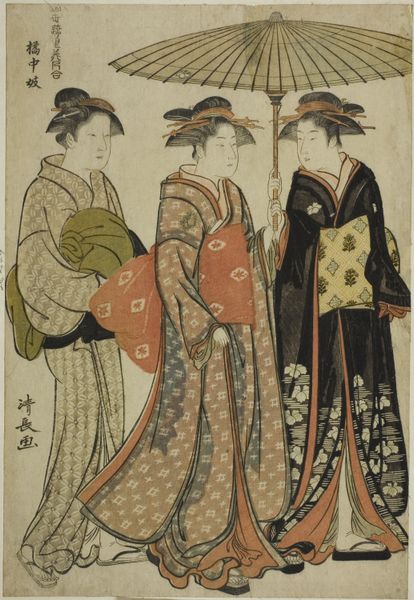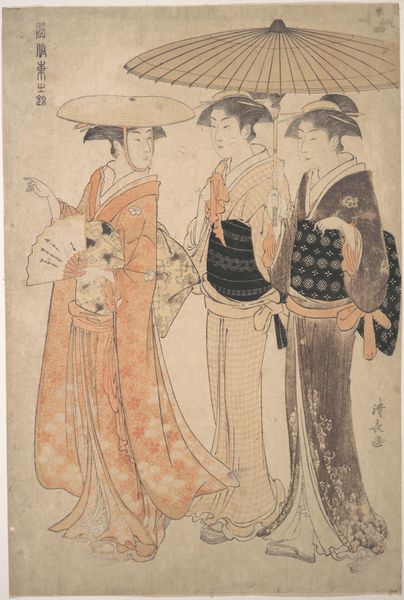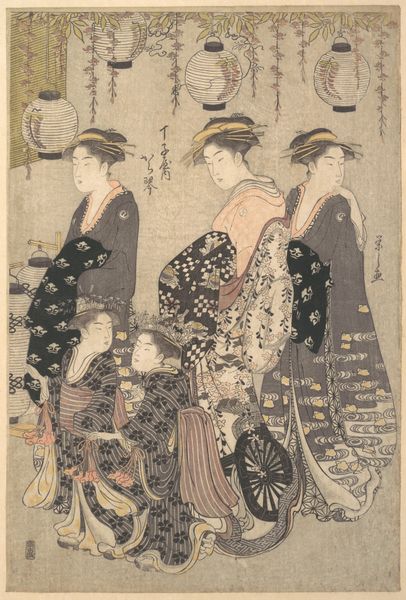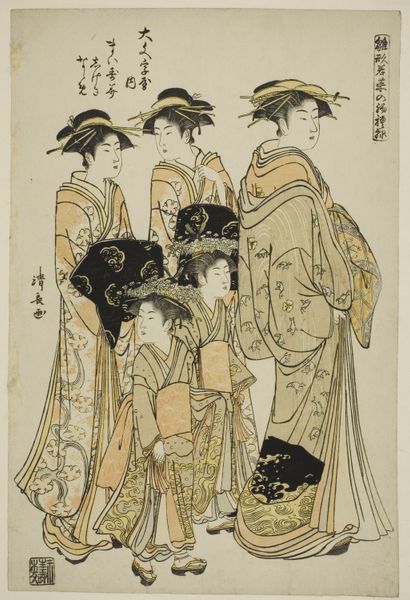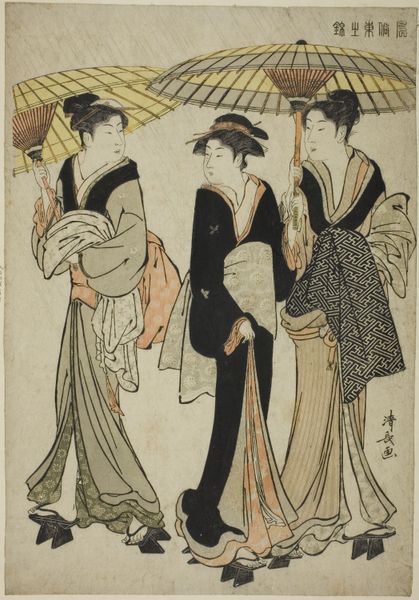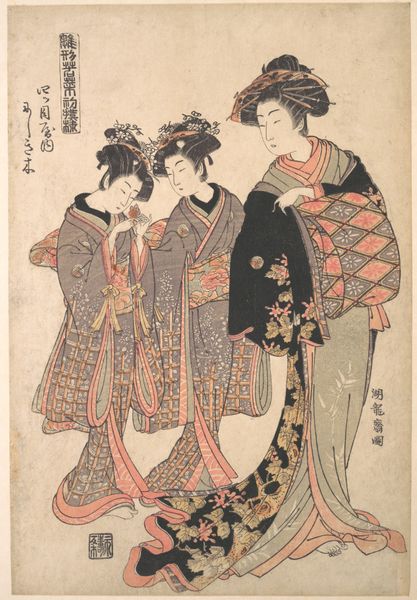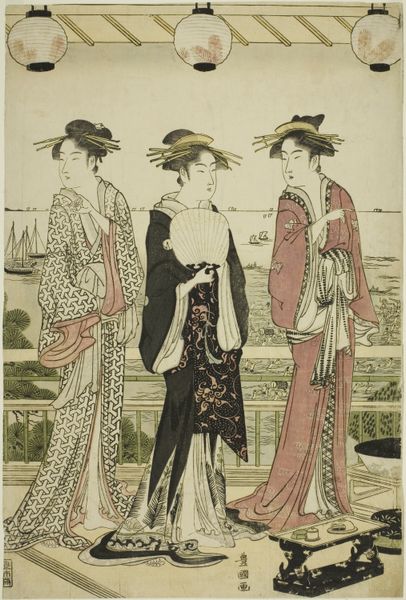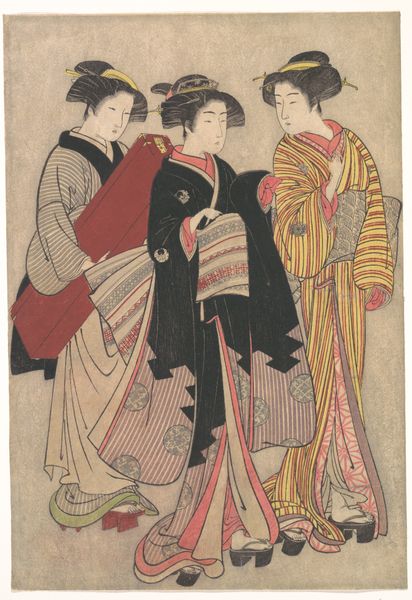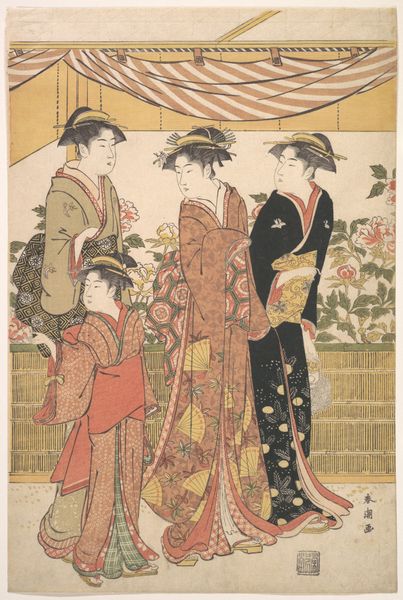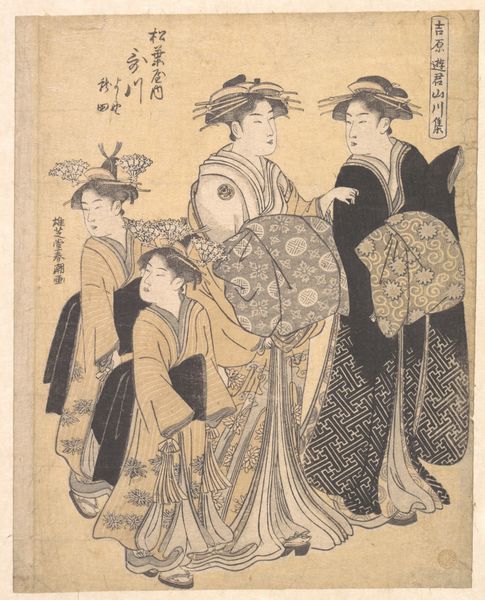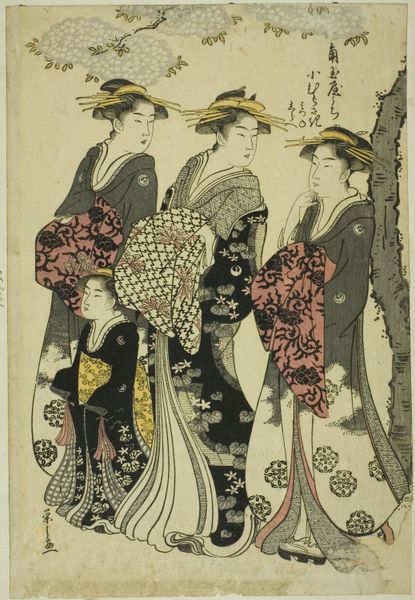
Courtesan District of Edo 1756 - 1829
0:00
0:00
#
ink drawing
#
pen drawing
#
mechanical pen drawing
# print
#
pen sketch
#
asian-art
#
junji ito style
#
japan
#
personal sketchbook
#
ink drawing experimentation
#
pen-ink sketch
#
men
#
pen work
#
watercolour illustration
Dimensions: 15 x 10 1/8 in. (38.1 x 25.7 cm)
Copyright: Public Domain
Curator: Ah, yes, Chōbunsai Eishi's print, "Courtesan District of Edo," likely created sometime between 1756 and 1829. I always find myself getting utterly lost in the subtle details, as it’s one of my personal favorites. Editor: It has a serene quality, despite the vibrant patterning. The restrained color palette almost makes it feel like a faded memory, or a half-remembered dream. What immediately strikes me are the complex fabrics, each design distinct and precisely rendered. Curator: Precisely! This print exemplifies Eishi’s refined style and his talent for depicting the elegant world of the Yoshiwara district. There is something profoundly delicate in his execution. They somehow drift on the page. Editor: Thinking about the production, I imagine the painstaking labor that went into carving the woodblocks for each color, each line. The artistry is not just in the design, but also in the skilled craftsmanship of the artisans who brought Eishi’s vision to life through those blocks and ink. I wonder what materials they were able to source locally. Curator: Absolutely. Each choice would affect the color saturation of the printed result. What do these faces mean in the present time? Are these merely objects, as Walter Benjamin feared with mechanical reproduction, or is there more? It’s as though each woman is wrapped in her own internal narrative. Their placement as well, shoulder-to-shoulder—are they offering support? Resignation? Judgement? Editor: Yes! Or what does the popularity of these prints reflect about Edo society? Was it a genuine appreciation for beauty, or a commodification of women? Were they accessible and affordable? What types of labor produced them, and were these products part of the development and industrialization in this area of Japan? Curator: Hmm. I see that question is deeply rooted in the socioeconomics surrounding the floating world. Maybe Eishi and his artisans meant to depict a dream, not necessarily a transaction? Perhaps their shared effort produced something quite new, as each artist interpreted the intention across skillsets. Editor: Indeed, we are not merely observing a picture; we’re engaging with the combined product of intention, production and skill. Curator: Perhaps this collaboration, where each artisan imbued the medium with its own spirit and intention, created this effect, still enchanting after all this time. Editor: Something to ponder for our next conversation.
Comments
No comments
Be the first to comment and join the conversation on the ultimate creative platform.
